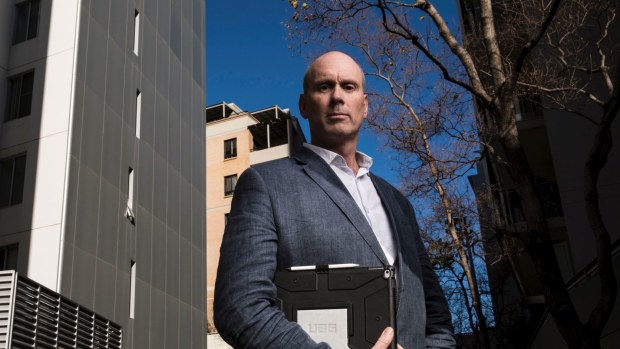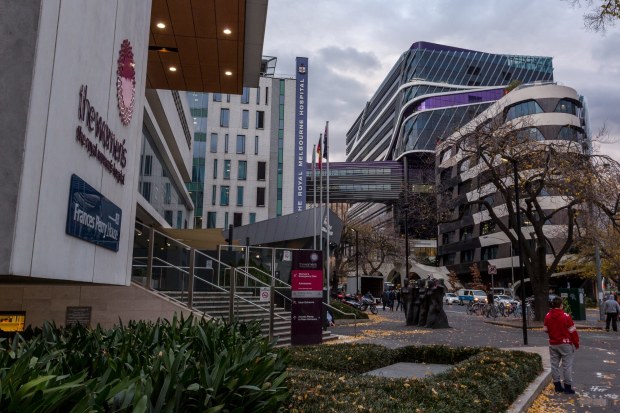Cladding crisis hits building surveyors: Lendlease sues, insurance premiums soar

The fallout from Australia's cladding crisis has hit licensed building certifiers and surveyors, with Lendlease taking its consultants to court to recover recladding costs of Melbourne's Royal Women's Hospital and professional indemnity premiums soaring as insurers seek to limit their exposure to cladding-related claims.
Licensed private certifiers and surveyors, who assess buildings for their compliance with the Building Code of Australia and issue certificates of occupation – tasks once done by local councils –- say the premiums are rising to unsustainable levels and could push professionals out of the industry, and even bring development to a halt.
Sydney-based Blackett Maguire + Goldsmith this month found the premium for its annual professional indemnity insurance policy had doubled from $70,000 last year to more than $120,000. The firm with 30 staff, one of the largest building certification companies in NSW, is negotiating for a lower bill.

''If we see more claims come in 2018 and 2019, then the insurance is going to go significantly higher next year'': NSW building certifier David Blackett. Dominic Lorrimer
"The insurance industry is saying 'This is all too tough, do we really need this risk?'," director David Blackett told The Australian Financial Review.
The risks are real.
Contractor Lendlease, which had to replace the external cladding on Melbourne's Royal Women's Hospital, in March filed papers in the Victorian Supreme Court, alleging breach of contract by building surveying consultancy Philip Chun and director Shane Leonard, for failing to notice that the design documentation included the use of combustible material and for failing to make it aware that the cladding did not comply with the building code.
Lendlease is thought to be claiming about $8 million to cover the recladding cost. A directions hearing is scheduled for October. Philip Chun and Mr Leonard are the first two respondents in the case that also alleges failures by architects DesignInc and Woodhead, fire engineer Exova Warringtonfire and facade contractor Minesco.
Mr Leonard said that while revisions to the building code announced last February ruled out the use of polyethylene-core aluminium panels, there were no such restrictions at the time the hospital contract was awarded in 2005.
"We believe it was installed in accordance with the code at the time," he told the Financial Review. "Under today's scheme you would say an [aluminium composite] panel with a PE core wouldn't comply but at the time it was deemed compliant."

Lendlease is seeking to recover costs of recladding the Royal Women's Hospital in Melbourne and has taken its building surveyor - and other consultants - to the Victorian Supreme Court. Daniel Pockett
Lendlease declined to comment.
The extent of buildings across Australia with potentially dangerous cladding is unclear. Mr Blackett said more such cases were likely – even when certifiers and surveyors were not liable – and that the impact on insurance premiums put their ability to keep practising at risk.
"There will be cases where firms such as Lendlease and no doubt other contractors, as time goes by, will be put in a position where they are forced to replace cladding," he said.
"If we see more claims come in 2018 and 2019, then the insurance is going to go significantly higher next year. That's unsustainable."
BMG is not alone. In Victoria, a slew of firms whose insurance policies came up for renewal at the end of June also faced big hikes, said Wayne Liddy, a licensed surveyor and national vice-president of industry body the Australian Institute of Building Surveyors.
"We're hearing of 200-400 per cent increases in premium," Mr Liddy said.
Insurance broker Darren Pavic agreed that the current round of premium renewals was expensive.
"The increases are large," said Mr Pavic, of national brokerage BRIC. "On average they would be going from less than 1 per cent of a firm's income to closer to 1.5 per cent to 2 per cent of a firm's income."
Another risk for building certifiers and surveyors is the growing push by insurers to insert exclusions around cladding-related claims into their policies. This is a further risk for practitioners, as the state licensing bodies require PI policies to be exclusion-free and could declare them in breach of license conditions if they accept a policy with a cladding-related exclusion.
The AIBS says the unco-ordinated nature of state-based responses to combustible cladding is making it hard for the industry to respond and wants the federal government to take charge.
If the problem isn't resolved, building certifiers facing unsustainable costs will leave the industry and that will bring construction to a halt, Mr Blackett said.
"The private sector is where all the expertise and experience sits," he said. "If they choose to or are forced to leave, those projects ... will have to stop. Local governments do not have the resources, nor in most instances the expertise to manage these projects."
Mr Liddy agreed.
"The industry will stop," he said. "It will come to a grinding halt."
Subscribe to gift this article
Gift 5 articles to anyone you choose each month when you subscribe.
Subscribe nowAlready a subscriber?
Introducing your Newsfeed
Follow the topics, people and companies that matter to you.
Find out moreRead More
Latest In Property
Fetching latest articles